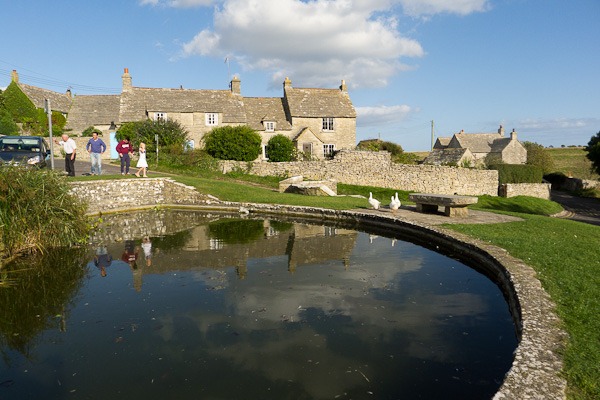- Lack of services/things to do for young people
- May lack accessibility
Some areas are expanding in population because:
- Variety/Plentiful jobs oppurtunities, for example in the tourist industry
- Elderly people retiring to more scenic areas
- Less expensive to set up businesses or buy houses despite proximity to larger urban areas
 Effect on Population pyramids:
Effect on Population pyramids:Remote Rural Area in Decline eg Worth Matravers = 240 people
- Strong Retirement element or people who have lived there for many years
- Wasted shape as young people move away to look for work or cheaper housing
- Regressive base as few children are born
- Many of the people left behind are elderly with less mobility, limited means or disenfranchised
- Houses may be brought as second homes creating a ghost town effect
- People left behind may be unable to leave as they lack the skills or mobility
Accessible Rural Area Expanding eg Corfe Castle = 980 people
- Relatively fewer older people
- New arrivals who commute to work (91% of people have car access or work from home)
- Expanding population as there is a baby boom because of the young families who move into the area
Consequences of expansion:
- 91% of families have 2 or more cars, increasing air pollution, congestion and likelihood of traffic accidents
- Traditional rural identity may be lost due to influx of foreigners
- May be conflict between established locals and new families moving in
Changes in Services:
Changes for the better J
|
Changes for the worse L
|
-Opening more nurseries has created increased the number of children
in schools. Grants and shared headships can be used to support schools
-Many village stores have been replaced by supermarkets which have
cheaper prices, longer opening hours and often run a bus service from local
villages
-Grants can be obtained for the refurbishment of village halls
-Cooperation between post offices and banks to provide an combined service
-Increase in number of mobile libraries
-New types of village shops like farm shops or garage shops
-Grants available for community bus or taxi services like the postal
bus service which combines transport with letter delivery
-Mini-health centres have been set up in larger villages and grants
are available to support rural GPs and pharmacies
|
-Local services have been cut
-Aging population means there are fewer school children, with schools
competing for them or closing, and wealthy parents putting children into
public schools
-Post offices being downgraded to part time or hole in the wall, with
pension services often being moved to banks
-Some GPs have closed and there is a decline in dentist surgeries
-Funds have been cut for youth clubs and activities for the elderly
-Closure of uneconomic bus routes and reduction in cross-county
services along with an increase in car ownership
|


|
|
Purbeck
|
UK
|
|
0-14
|
18%
|
20%
|
|
15-64
|
60%
|
64%
|
|
65+
|
22%
|
16%
|

thanks for this blog! really helpful and you have a great understanding of this obviously.Printing the relevant case studies for revision, thanks again!
ReplyDelete